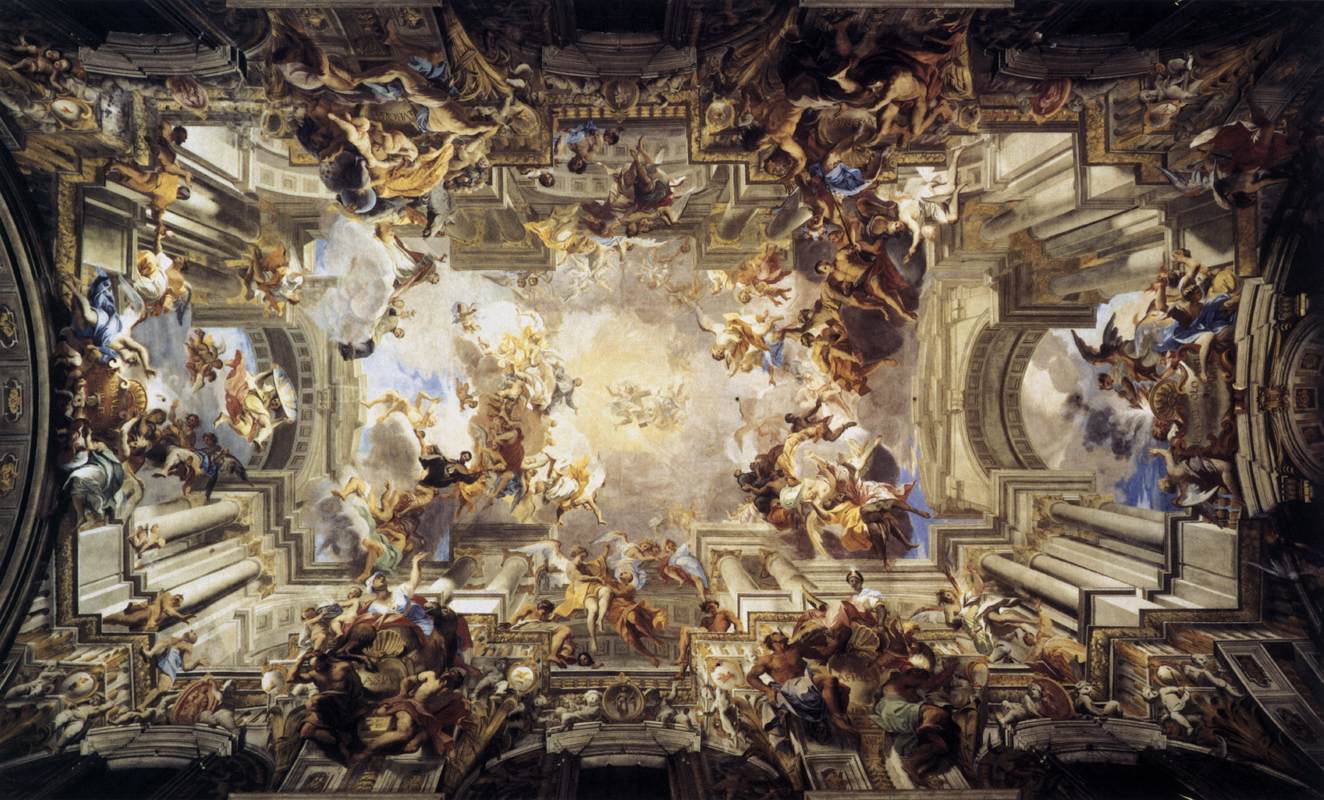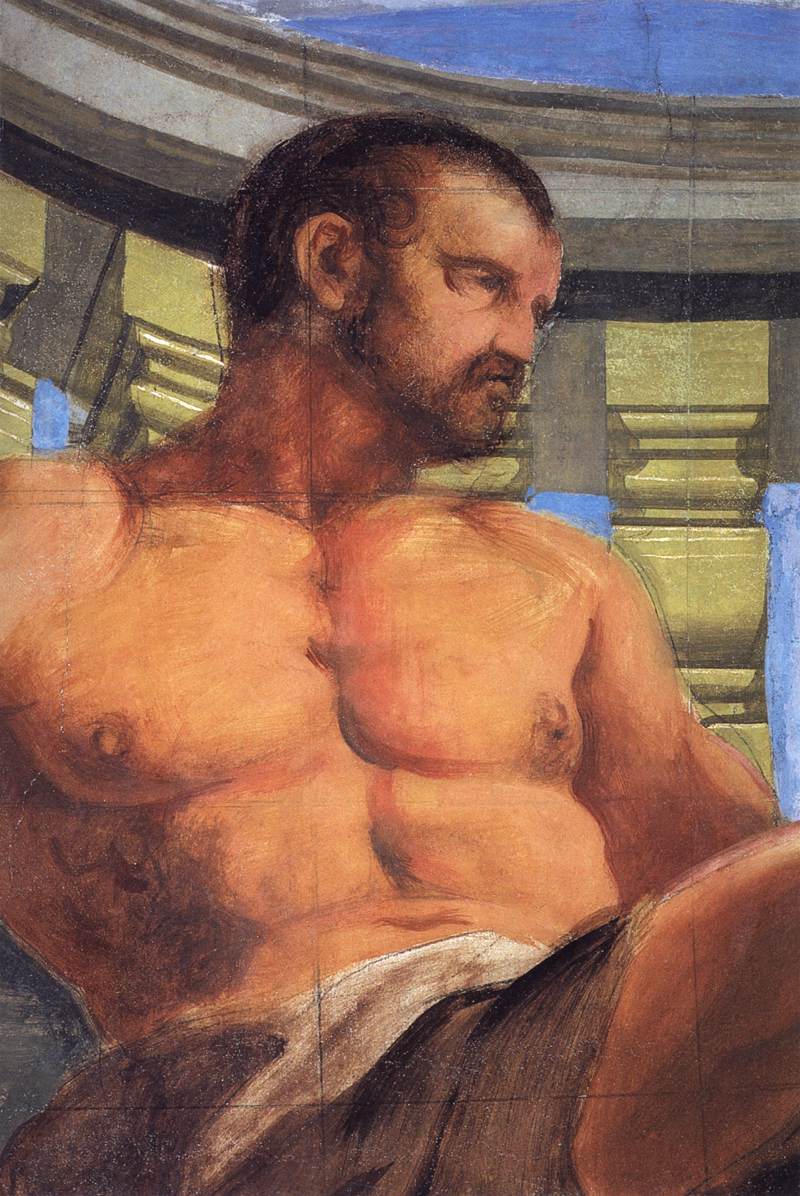By Anne Leader
Jesuit artist Andrea Pozzo died on 31 August 1709 in Vienna, where he was working for members of the Austrian court. Pozzo is known for his talent at quadratura— an illusionistic technique that simulates architecture in ceiling paintings, as seen in his tour de force ceiling fresco at the church of Sant’Ignazio in Rome. He also created the altar for the tomb of Saint Ignatius in the mother church of the Gesù, one of the most sumptuous of the late Baroque period. In 1703, Pozzo was invited to Vienna where he worked on the local Jesuit church and other secular projects, including the stupendous ceiling frescoes in the Marmorsaal of the Liechtenstein garden palace showing the Labors of Hercules.
Reference: Richard Bösel. “Pozzo, Andrea.” Grove Art Online. Oxford Art Online. Oxford University Press.
Further reading: Perspective in Architecture and Painting: An Unabridged Reprint of the English-and-Latin Edition of the 1693 “Perspectiva Pictorum Et Architectorum” by Andrea Pozzo (Dover Translation); Mirabili disinganni. Andrea Pozzo (1642-1707). Architetto e pittore gesuita. Catalogo della mostra
Allegory of the Jesuits’ Missionary Work, 1691-94, Fresco, Sant’Ignazio, Rome, full view and detail
Deeds of Hercules and his Apotheosis, 1704-08, Fresco, Liechtenstein Museum, Vienna
Omphale Punishing Hercules (detail), 1704-08, Fresco, Liechtenstein Museum, Vienna
Altar of St Ignatius Loyola, 1695-99, Marble, bronze, Il Gesù, Rome
Self-portrait, 1690s, oil on canvas, Galleria degli Uffizi, Florence






